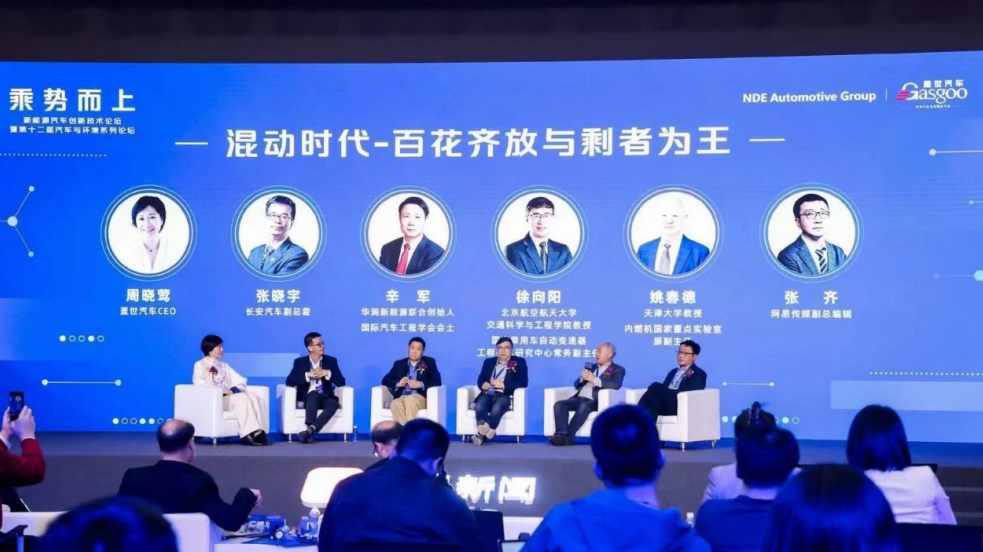Experts speak at an NEV technology forum in Beijing on March 10.
Battery-only EVs are not likely to dominate the market soon as their electrified siblings, including plug-in hybrids and range-extended ones, have their own positions in the market, experts said at a forum on NEV technologies hosted by Gasgoo Auto and NetEase in Beijing on Sunday.
NEVs are becoming increasingly competitive against traditional internal combustion engine vehicle. Also, NEVs with engines, which are plug-in hybrids and range-extended ones, experienced higher penetration rates than battery-only EVs.
The trend is likely to continue in the coming years, indicating a prolonged coexistence of PHEVs and range-extended vehicles alongside BEVs, said Xu Changming, vice-director of the National Information Center.
Zhang Xiaoyu, executive vice-president of Changan Auto, said NEVs with engines are expected to enjoy a "golden growth period" in the next three years. The long-term outlook suggests that BEVs may dominate as costs decrease and charging infrastructure and fast-charging technology develop, accelerating the replacement of hybrid models by BEVs.
Zhang predicted that NEVs are to account for 50 percent of new car sales by 2025, driven primarily by plug-in hybrids and range-extended ones.
Changan remains committed to a strategy of advancing along multiple powertrain routes, with Zhang emphasizing that users should have the freedom to choose their preferred powertrain type.
Diversity in hybrid technology is the development trend, with no one-size-fits-all solution. Companies should tailor hybrid strategies for different customer groups and product positions.
But modular and platform-based development is crucial for flexibility and efficiency, Xu Xiangyang, a professor of automotive engineering at Beihang University, said.
Shi Jianhua, deputy secretary-general of China EV100, said the diversification of technologies, particularly in hybrid advancements, offer various possibilities for the automotive market.
ongoing improvements in hybrid engines, with thermal efficiency exceeding 43 percent and the potential to reach 47 percent in the next generation, underscore the industry's focus on innovation.

